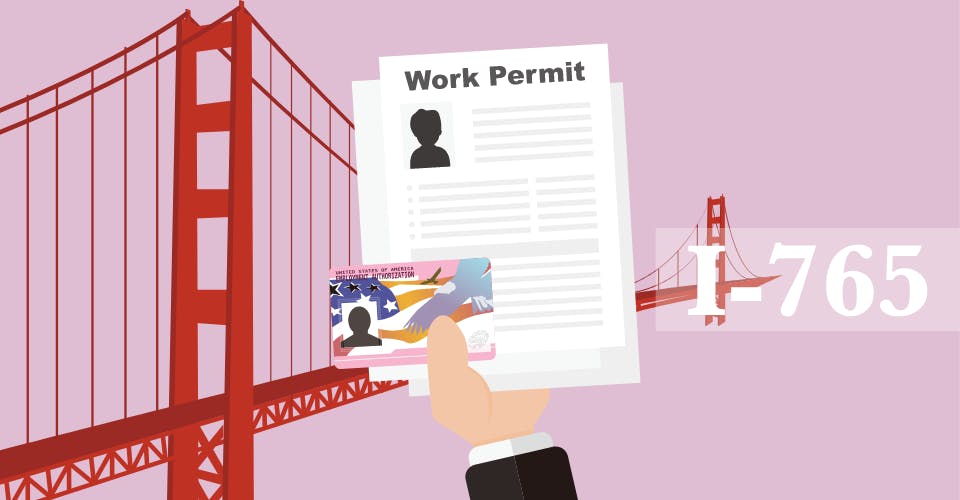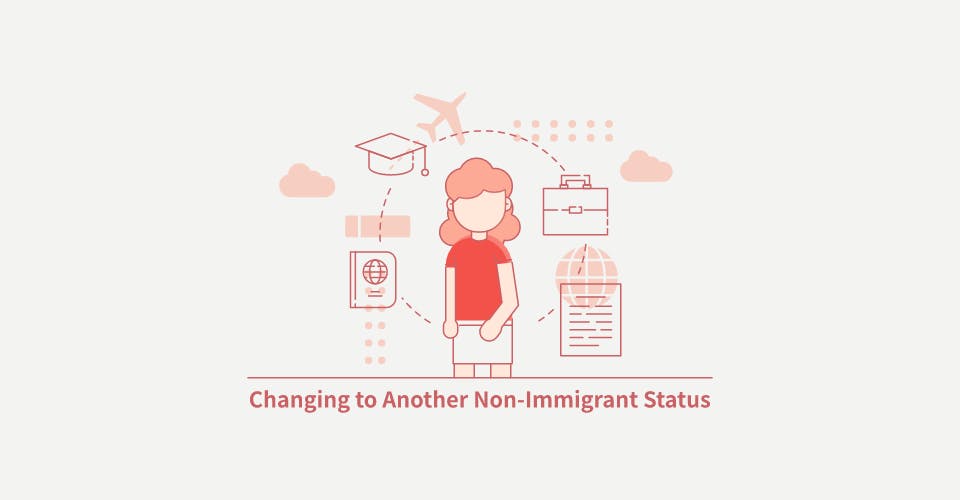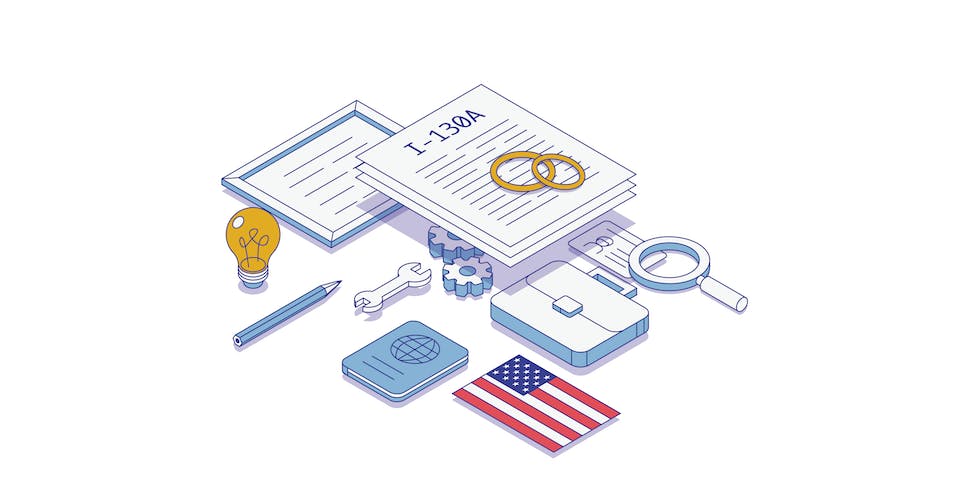The I-765 is the USCIS form used as an application for employment authorization in the United States. While many non-citizens come to the U.S. on non-immigrant working visas, and are already authorized to work, others need to apply for an EAD, especially derivative family members who have travelled to the United States. This brief guide will help immigrants and those seeking lawful employment in the United States understand this process via several I-765 categories.
How to file an I-765 form
The I-765 form can simply be submitted with your I-485 application if you’re applying for a marriage green card, along with two passport sized photos. You’ll need to attach it to your application package when mailing. This is the standard way those who avoid I-765 fees choose to file their document.
The other option is to submit an I-765 application with receipt of a notice that the USCIS has received your I-485 application. However, anytime you are filing outside of an I-485 application, the normal fee for is $410.
Below, there are several categories of immigrants who can file an I-765 based on their existing status. For most cases, there are several documents that you will need to accompany with your form. These documents include:
- Your I-94 Entry/Exit Record
- Passport photo page
- A-number (if applicable)
- A copy of your U.S. visa
Processing Time
The USCIS is known to have processed I-765 applications and get work permits to applicants within 90 days. However, in recent years the backlog for these types of work permits has grown, and the entire work permit process can take anywhere from 3-6 months.
Who Can Submit I-765?
Refugees and Asylees
Two major categories of immigrants in the United States that are granted employment authorization once they receive such status are refugees and asylees. In other words, once they have approved by the USCIS, they are technically allowed to seek employment in the United States. However, this is evidenced by an actual EAD document, which means an application must follow. In these cases, refugees and asylees need to fill out an I-765 Form along with submitting their I-94 Record of Entry/Exit, or their Final Notice of Eligibility for Resettlement (approval letter).
Note: If you are an asylee and have applied under INA section 209 to adjust to lawful permanent resident status using the I-485, file Form I-765 under category (a)(5) as an asylee.
Spouse/Derivative of an H1-B Recipient
In addition to the above category, spouses of H1-B recipients are eligible for employment authorization in the United States, although they physically need the card to be able to work. In addition, H-4 dependents need to show the following when they are also submitting their I-765 Form:
1. Form I-94 showing admission as an H-4 nonimmigrant or the most recent approved extension of stay.
2. The proof of their relationship to the H1-B holder; which can be shown via a copy of a marriage certificate.
3. The basis for their work authorization, which could be the evidence that their spouse is the beneficiary of an approved I-140 Petition or PERM certification.
K-1 Nonimmigrant Fiancé(e) of U.S. Citizen or K-2 Dependent.
As you may recall, the K-1 visa permits the foreign-citizen fiancé(e) to travel to the United States and marry his or her U.S. citizen sponsor within 90 days of arrival. Persons who fit into this category can file an I-765 as well, but only for temporary employment.
Such applicants should file their I-765 along with evidence of their admission, for example copies of their Form I-94, passport, or other travel document, as well as their K visa that has been issued. Individuals who hold this status are only authorized to work under this category during their 90 days in K-1 or K-2 status.
Students experiencing economic hardship
Another category of eligible persons for work authorization in the United States are F-1 visa holding students who are experiencing economic hardship, or F-1 students seeking practical training in a position that is directly related to their Major Area of Study.
F-1 visa holders who are experiencing economic uncertainty need to prove the following along with filing their I-765:
- A Form I-20
- Evidence they have been in F-1 status for one full academic year
- Good standing/GPA
- Carrying a full course of study
- The employment is necessary to avoid severe economic hardship
Adjustment of Status Applicants
While the above mentioned categories all fall under their only immigration status, immigrants and non-immigrants in the United States often file an adjustment of status for a green card. H1-B recipients often apply using an I-485 application shortly after they are living and working in the United States. Immigrants married to a U.S. citizen are eligible after three years.
Whatever the case, if you are filing an I-485 application, you can also file for a temporary working authorization, i.e. an EAD while your case is processing. This is a common route to securing an EAD card, and even possibly a renewal, if you’re I-485 application is pending for more than a year.














